Vintage 1930s Celluloid Powder Pot With Diana The Huntress on Lid, Ancient Greek Goddess of the Moon With a Leaping Deer, Art Deco Era
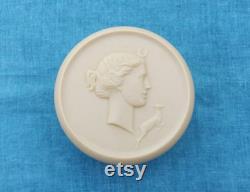
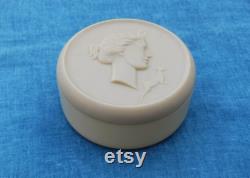
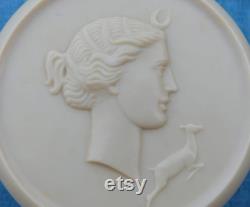
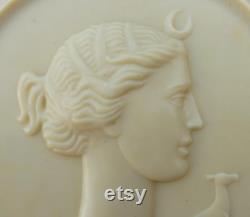
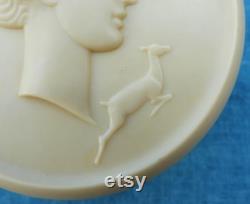
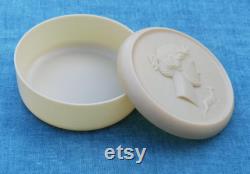
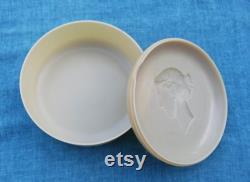
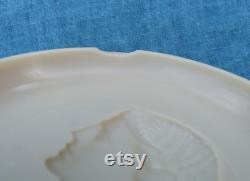
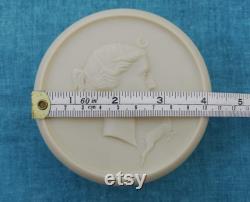
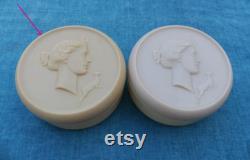

Here is a truly splendid 1920s / 1930s art deco era celluloid plastic powder pot and lid to add to your collection. This useful straight-sided pot can be used for loose powder as originally intended, or alternatively for your trinkets, small jewellery items: hair pins and slides, earrings, nose studs, belly bars, etc etc.
Keep this on your dressing table for all your tiny items, to prevent them getting lost. This celluloid powder pot measures 11cms in diameter x approx. 5cms high (that's 4 3/8" x 2"). The lid has a fantastic carving of diana the huntress, the ancient greek goddess of the moon - see the tiny crescent moon on her forehead.
She is shown in profile with her hair tied back with bands, and a very straight nose. This is simply delightful, everything is in a plain cream colour, and both lid and pot are in very good condition.
There is a tiny curved chip on the underside rim of the lid on this one, (see photo 8) but it's not noticeable when the lid is on. I have knocked 5 off because it is not in excellent condition like the other one. It's still very beautiful indeed, and very collectible.I have no information regarding who made this, but it is very unusual. The early plastics are hard-wearing, and were used for some very decorative items, especially for the beauty trade. Jewellery boxes, powder pots like this, soap pots and other toiletry articles were all made of celluloid, as a cheaper and easier to work alternative to the much harder bakelite. I have two of these lovely diana pots. This one is slightly darker than the other, (see my last photo) and so although they don't match exactly, they would be a nice pair for your dressing table - one for jewellery bits and pieces, and one for cotton wool balls or the like perhaps the other slightly paler one is here.
Art deco is the popular style of visual arts, architecture and design that first appeared in france just before world war i. Art deco influenced the design of buildings, furniture, jewellery, fashion, cars, movie theatres, trains, ocean liners, and everyday objects such as radios and vacuum cleaners. It took its name, short for'les arts décoratifs', from the international exhibition of modern decorative and industrial arts held in paris in 1925. It combined modern styles with fine craftsmanship and rich materials.
During its heyday, art deco represented luxury, glamour, exuberance, and faith in social and technological progress. The distinguishing features of the style are simple, clean geometric shapes, often with a streamlined look; ornament that is also geometric, or stylised from natural forms, and unusually varied, often expensive materials, including man-made plastics, especially bakelite, in addition to natural ones (jade, silver, ivory, obsidian, chrome, and rock crystal).
Though art deco objects were rarely mass-produced, the characteristic features of the style reflected admiration for the modernity of the machine and for the inherent design qualities of machine-made objects e. Relative simplicity, symmetry, and unvaried repetition of elements. This item is made of celluloid plastic.

